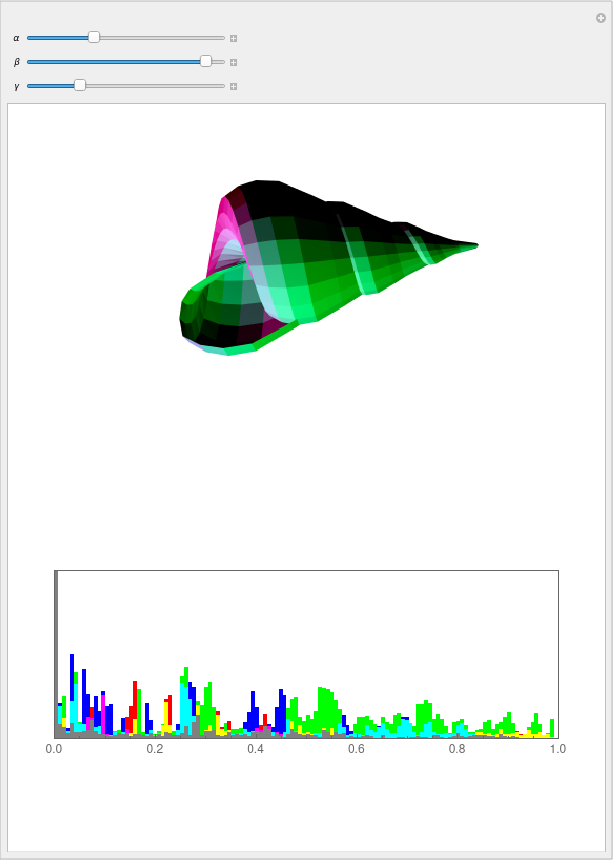A rotation relative to the illumination, and then a statistics on the colors seen from a specific view point - is it this you need?
gr0 = Import["ExampleData/seashell.obj", "Graphics3D"];
Manipulate[
GraphicsColumn[{img =
Rasterize@
Graphics3D[
GeometricTransformation[#,
EulerMatrix[{\[Alpha], \[Beta], \[Gamma]}]],
Lighting -> {{"Point", Red, Scaled[{-1, -1, 0}]}, {"Point",
Blue, Scaled[{0, -1, 0}]}, {"Point", Green,
Scaled[{1, -1, 0}]}}, Boxed -> False, Axes -> False] & @@ gr0, ImageHistogram@RemoveBackground[img, White]},
ImageSize -> Large], {\[Alpha], 0, 2 Pi}, {\[Beta], 0,
2 Pi}, {\[Gamma], 0, 2 Pi}]
